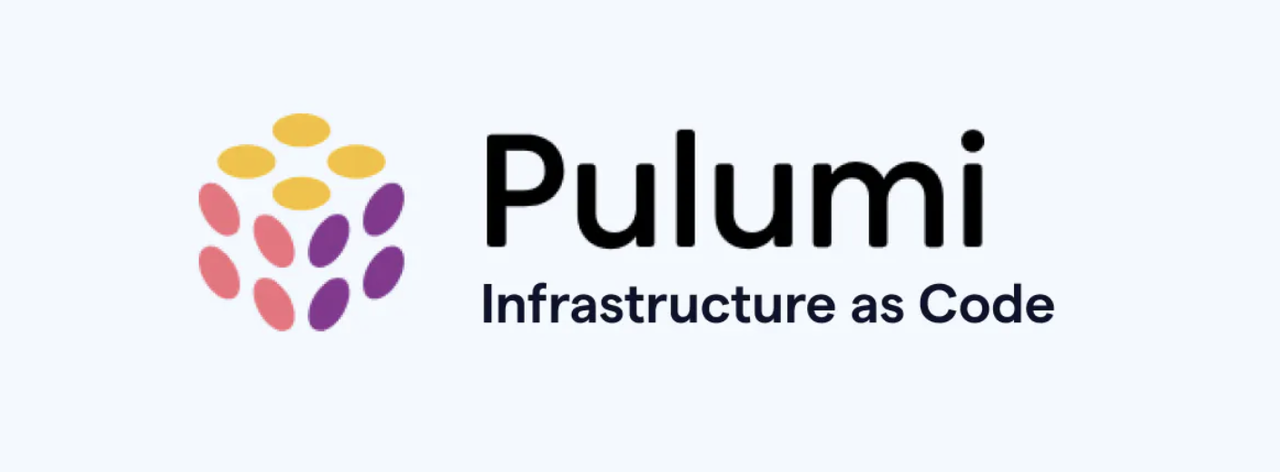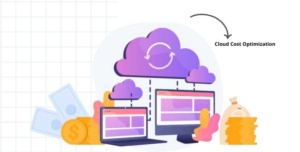Automate Infrastructure with Pulumi: Code your infrastructure using real languages.
Automating Infrastructure with Pulumi: Infrastructure as Code with Real Languages is a concept that allows developers to use familiar programming languages to define and manage their infrastructure. Pulumi is an open-source tool that enables infrastructure as code by providing a platform-agnostic approach to provisioning and managing cloud resources. With Pulumi, developers can leverage the power of real programming languages like Python, JavaScript, TypeScript, and Go to define their infrastructure in a declarative and version-controlled manner. This approach eliminates the need for learning domain-specific languages and allows developers to leverage their existing skills and tools to automate infrastructure provisioning and management.
Benefits of using real programming languages for infrastructure as code with Pulumi
Infrastructure as Code (IaC) has become an essential practice in modern software development. It allows developers to define and manage their infrastructure using code, bringing the same benefits of version control, testing, and automation to infrastructure that have long been enjoyed by application code. Traditionally, tools like Terraform and CloudFormation have been used to implement IaC. However, a new player has emerged in the field: Pulumi. Pulumi takes a different approach by allowing developers to use real programming languages like Python, JavaScript, and Go to define and manage their infrastructure. In this article, we will explore the benefits of using real programming languages for infrastructure as code with Pulumi.
One of the main advantages of using real programming languages for infrastructure as code is the familiarity it brings to developers. Most developers are already proficient in at least one programming language, so using that language to define infrastructure feels natural and reduces the learning curve. With Pulumi, developers can leverage their existing skills and knowledge to define infrastructure resources, making it easier to adopt and integrate into existing workflows.
Another benefit of using real programming languages is the ability to leverage the rich ecosystem of libraries and frameworks available for those languages. Pulumi provides a wide range of libraries and packages that allow developers to easily provision and manage resources across different cloud providers. For example, if you are using Python, you can use the popular boto3 library to interact with AWS resources. This means that developers can take advantage of the extensive community support and documentation available for these libraries, making it easier to implement complex infrastructure configurations.
Using real programming languages also enables developers to apply software engineering best practices to their infrastructure code. This includes using version control systems like Git, writing tests, and following coding standards and conventions. With Pulumi, infrastructure code becomes just another part of the codebase, allowing developers to apply the same development practices they use for application code. This leads to improved code quality, maintainability, and collaboration among team members.
Furthermore, real programming languages provide powerful abstractions and control flow constructs that make it easier to express complex infrastructure configurations. For example, with Pulumi, you can use loops, conditionals, and functions to dynamically create and manage resources. This allows for more flexible and reusable infrastructure code, reducing duplication and improving overall efficiency. Additionally, real programming languages provide advanced error handling and debugging capabilities, making it easier to troubleshoot and fix issues in infrastructure code.
Another advantage of using real programming languages for infrastructure as code is the ability to leverage existing tools and frameworks. For example, if you are using a language like Python, you can use popular testing frameworks like pytest to write tests for your infrastructure code. This allows for automated testing of infrastructure configurations, ensuring that changes do not introduce unintended side effects. Similarly, you can use tools like linters and formatters to enforce coding standards and catch potential issues early on.
In conclusion, using real programming languages for infrastructure as code with Pulumi brings numerous benefits to developers and organizations. It allows for a more familiar and seamless integration of infrastructure code into existing workflows. Developers can leverage their existing skills and knowledge, as well as the rich ecosystem of libraries and frameworks available for their chosen language. Applying software engineering best practices becomes easier, leading to improved code quality and collaboration. Real programming languages also provide powerful abstractions and control flow constructs, making it easier to express complex infrastructure configurations. Lastly, existing tools and frameworks can be leveraged to automate testing and enforce coding standards. With all these advantages, it is clear that Pulumi is a game-changer in the world of infrastructure as code.
How Pulumi simplifies and automates infrastructure provisioning and management
Automating Infrastructure with Pulumi: Infrastructure as Code with Real Languages
In today’s fast-paced and ever-changing technology landscape, the need for efficient and reliable infrastructure provisioning and management has become paramount. Traditional methods of manually configuring and managing infrastructure are no longer sufficient to keep up with the demands of modern applications and services. This is where Pulumi comes in, offering a powerful and flexible solution for automating infrastructure with real languages.
Pulumi is an open-source infrastructure as code (IaC) tool that allows developers and operators to define and manage their infrastructure using familiar programming languages such as JavaScript, TypeScript, Python, and Go. This means that instead of learning and using a domain-specific language (DSL) or a configuration file format, you can leverage your existing programming skills to define and manage your infrastructure.
One of the key advantages of using Pulumi is the ability to treat infrastructure as code. This means that you can version control your infrastructure definitions, collaborate with your team, and apply software engineering best practices to your infrastructure code. By using real programming languages, you can leverage the power of code review, automated testing, and continuous integration and deployment (CI/CD) pipelines to ensure the reliability and consistency of your infrastructure.
Pulumi also simplifies the process of provisioning and managing infrastructure by providing a high-level abstraction over cloud providers’ APIs. Instead of dealing with low-level API calls and complex resource configurations, you can use Pulumi’s intuitive and declarative API to define your infrastructure resources. Pulumi takes care of translating your code into the appropriate API calls and handles the necessary resource dependencies and ordering.
Another powerful feature of Pulumi is its support for multi-cloud and hybrid cloud environments. With Pulumi, you can define your infrastructure once and deploy it to multiple cloud providers, such as AWS, Azure, and Google Cloud Platform. This allows you to take advantage of the best features and services offered by each cloud provider without being locked into a specific vendor. Additionally, Pulumi supports on-premises and hybrid cloud deployments, enabling you to manage your infrastructure across different environments seamlessly.
Pulumi also provides a rich ecosystem of libraries and packages that extend its functionality and simplify common infrastructure tasks. These libraries cover a wide range of use cases, including managing virtual machines, containers, databases, networking, and security. By leveraging these libraries, you can accelerate your infrastructure development and reduce the amount of boilerplate code you need to write.
Furthermore, Pulumi integrates seamlessly with existing infrastructure tools and workflows. Whether you are using configuration management tools like Ansible or Terraform, or container orchestration platforms like Kubernetes, Pulumi can complement and enhance your existing infrastructure stack. This allows you to leverage your existing investments and gradually adopt Pulumi without disrupting your current workflows.
In conclusion, Pulumi offers a powerful and flexible solution for automating infrastructure provisioning and management. By using real programming languages, treating infrastructure as code, and providing a high-level abstraction over cloud providers’ APIs, Pulumi simplifies the process of defining and managing infrastructure. With its support for multi-cloud and hybrid cloud environments, rich ecosystem of libraries, and seamless integration with existing infrastructure tools, Pulumi empowers developers and operators to build and manage reliable and scalable infrastructure. So, if you are looking to automate your infrastructure and leverage the power of real languages, Pulumi is definitely worth exploring.
Best practices for automating infrastructure with Pulumi
Automating infrastructure has become a crucial aspect of modern software development. With the rise of cloud computing and the need for scalable and reliable infrastructure, developers are turning to Infrastructure as Code (IaC) solutions to manage their infrastructure in a programmatic and automated way. One such solution that has gained popularity is Pulumi, which allows developers to define and manage their infrastructure using real programming languages.
One of the best practices for automating infrastructure with Pulumi is to treat infrastructure as code. This means that infrastructure should be version controlled, reviewed, and tested just like any other codebase. By treating infrastructure as code, developers can ensure that changes to the infrastructure are tracked, documented, and easily reproducible. This also allows for collaboration between team members, as changes to the infrastructure can be reviewed and approved before being deployed.
Another best practice is to use a real programming language when defining infrastructure with Pulumi. Unlike other IaC solutions that use domain-specific languages, Pulumi allows developers to use familiar programming languages such as JavaScript, TypeScript, Python, and Go. This makes it easier for developers to leverage their existing skills and knowledge when defining and managing their infrastructure. It also allows for the use of modern programming paradigms such as object-oriented programming, functional programming, and modularization, which can greatly improve the maintainability and scalability of the infrastructure code.
When defining infrastructure with Pulumi, it is important to follow the principles of infrastructure as code. This includes using declarative syntax to define the desired state of the infrastructure, rather than imperatively specifying the steps to achieve that state. By using declarative syntax, developers can focus on the desired outcome rather than the specific implementation details, which makes the code more concise and easier to understand. It also allows for better separation of concerns, as the infrastructure code can be decoupled from the application code.
Another best practice is to use Pulumi’s built-in support for infrastructure as software patterns. Pulumi provides abstractions and libraries that allow developers to define common infrastructure patterns such as virtual machines, databases, load balancers, and networking configurations. By using these patterns, developers can avoid reinventing the wheel and leverage best practices for infrastructure design and deployment. This not only saves time and effort but also ensures that the infrastructure is reliable, scalable, and secure.
Finally, it is important to test and validate the infrastructure code before deploying it. Pulumi provides tools and frameworks for testing infrastructure code, allowing developers to write unit tests, integration tests, and end-to-end tests for their infrastructure. By testing the infrastructure code, developers can catch potential issues and bugs early on, reducing the risk of failures and downtime in production. It also allows for continuous integration and continuous deployment (CI/CD) pipelines, where changes to the infrastructure can be automatically tested and deployed to production.
In conclusion, automating infrastructure with Pulumi offers many benefits for developers and organizations. By treating infrastructure as code and using real programming languages, developers can leverage their existing skills and knowledge to define and manage their infrastructure. Following best practices such as treating infrastructure as code, using declarative syntax, leveraging infrastructure as software patterns, and testing the infrastructure code can greatly improve the reliability, scalability, and maintainability of the infrastructure. With Pulumi, developers can automate their infrastructure with ease and confidence, enabling them to focus on building and delivering great software.In conclusion, automating infrastructure with Pulumi allows developers to use real programming languages to define and manage their infrastructure as code. This approach offers several benefits, including improved productivity, reduced complexity, and increased flexibility. By leveraging familiar programming languages, developers can easily define and deploy infrastructure resources, making it easier to manage and scale their applications. Pulumi also provides a consistent and unified way to manage infrastructure across different cloud providers, enabling teams to adopt a multi-cloud strategy if needed. Overall, automating infrastructure with Pulumi helps streamline the development and deployment process, making it more efficient and reliable.











